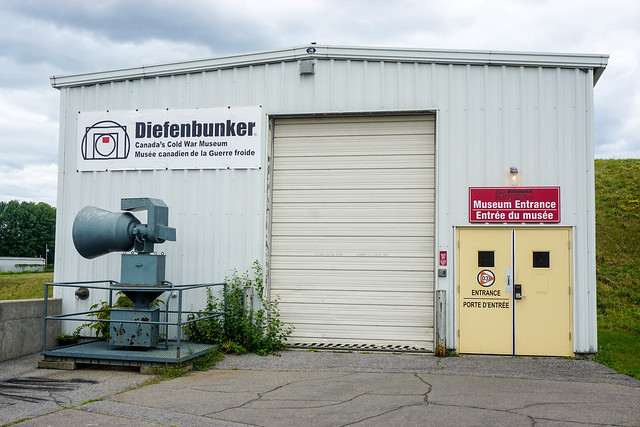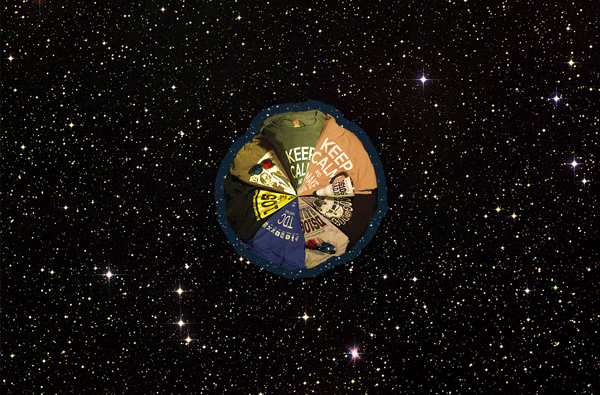The Diefenbunker (official site, Emergency Government Headquarters) is a four-story, 300 room, 100,000 square foot underground bunker, and was meant to temporarily house 535 Canadian government officials and military officers in the event of a nuclear war. Shrouded in mystery, the Diefenbunker, nicknamed after then Prime Minister John Diefenbaker, was designed and built in secrecy during the crest of Cold War fear, between 1959 and 1961. The name of the facility was given by a Toronto Star journalist who exposed a story of its development.
Located about 35 kilometres west of Ottawa in Carp, Ontario (upwind from any potential Ottawa-area fallout), the bunker was the largest of a series of emergency shelters constructed across the country to provide for continuance of government in the event of Nuclear attack. The facility was designed to provide (cramped) accommodations and a work environment for a small representation of government officials (Prime Minister, Governor General, ~10 cabinet ministers), bureaucrats, support staff and soldiers for a duration of about 30 days.
Although the Canadian Parliament once debated moving government operations to the bunker at the height of the Cuban Missile Crisis, the crisis ended before a decision could be reached, and as a result, the bunker never had to serve as an emergency shelter. Regardless, a staff of approximately 200 was onsite in a state of preparedness for over 30 years, staffing part of the national governments telecommunications infrastructure, until the facility was decommissioned in the early 1990s.
A Summer 2015 Day Trip
Having never visited the facility, now a National Museum, my youngest son and I took a day trip up to Ottawa to explore the site. Located on a hillside in rural Ontario, the parking lot, guard shack, and entry building are pretty much all that is visible when you approach through the trees. There are a couple of ventilation stacks rising out of the grass hilltop, but there is very little to see above ground otherwise.
As one might expect, going underground in an old moth-balled institution introduced not only unique history sights, but also a temperature change and smells. Designed to have its temperature maintained primarily through the geo-thermal effect of the surrounding earth, the bunker was cool on a hot summer day, and would apparently remain warm(ish) without heaters during the frigid Canadian winter. The effect of 50 year old construction, furnishings, fixtures, and furniture was certainly lingering in the air — not necessarily unpleasant, but distinctly the smell of history.
There were a number of really cool and unique features to the bunker/museum:
- the (model) A-Bomb on display at the entrance;
- the blast tunnels
- the blast doors
- the decontamination shower
- the telecommunications centre (and emergency destruction station)
- the War Cabinet room (featured in the film, “The Sum of All Fears”
- what I call “the Dr. Strangelove control room” (outdoor screening, next Friday night!)
- the vault designed to hold Canada’s gold and keep it safe from becoming radiated (remember Goldfinger‘s plan in the 1964 film?)
- all the heavily fortified doors everywhere we went
- the Spy Camp for kids that was running behind closed doors on Level 2
The visit was totally worth the drive, and Village Residents hanging out in the Summer2015 #ds106 #prisoner106 should not be surprised if a little Art gets created from some of the photos taken during the trip. Check out the pics below from our visit.
Slideshow
(photos by aforgave, on Flickr CC BY-NC-SA)




























1 Response
[…] The Diefenbunker: Canada’s Cold War Museum […]